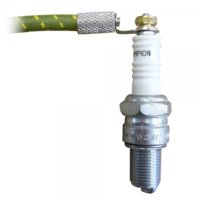deadchef
xsbobblehead
ok, i really want to get a better understanding of resistance in reference to plugs vs. wires vs. plug caps.
from my very basic understanding, the higher resistance a plug, wire or cap has the less emi and rfi is emitted. and i think it also means that less power is going to the plug, correct?
modern high output ignitions can react to the em and rf interferrence (along with the radio in your car and other electrical systems) so the resistant plugs/wires/caps are needed, correct?
on older bikes, especially ones with points, is all this resistance needed? what about with tci and pamco bikes?
and lastly, where is the resistance needed? at the wire, cap or plug? or all three? and how much?
thank you.
from my very basic understanding, the higher resistance a plug, wire or cap has the less emi and rfi is emitted. and i think it also means that less power is going to the plug, correct?
modern high output ignitions can react to the em and rf interferrence (along with the radio in your car and other electrical systems) so the resistant plugs/wires/caps are needed, correct?
on older bikes, especially ones with points, is all this resistance needed? what about with tci and pamco bikes?
and lastly, where is the resistance needed? at the wire, cap or plug? or all three? and how much?
thank you.




